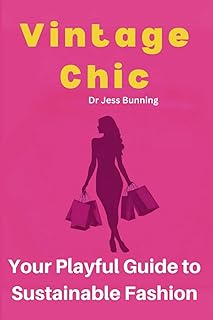As awareness of the environmental impact of the fashion industry grows, many consumers are reevaluating their shopping behaviors. Instead of constantly buying new clothes, people are making more conscious decisions about their purchases, opting for quality over quantity.
One approach readers have taken to cut back on buying new clothes is by turning to op shops for secondhand items. By shopping at thrift stores, individuals like Jill have not only found unique pieces but also diversified their style choices, exploring colors and textures they wouldn’t have considered before.
Others, like Dylan, have embraced minimalism by curating a wardrobe of versatile, high-quality pieces. With a background in fashion and textiles, Dylan is more aware of the environmental impact of fast fashion and seeks out brands that prioritize sustainability.
Changing shopping habits also involves resisting the urge to make impulse purchases. Charlie, for example, has found success in walking away from online shopping carts, opting instead to shop in person for vintage or well-made clothing. This shift not only reduces unnecessary spending but also fosters a deeper appreciation for each purchase.
Concerns about garment end-of-life and sustainability have led readers like Billie to prioritize quality and eco-friendly materials in their clothing choices. By opting for pieces designed with recyclability in mind, they aim to reduce textile waste and contribute to a more sustainable fashion industry.
Challenges like the Wardrobe Freeze initiated by Ethically Kate have prompted individuals like Jamie to reassess their consumption habits. While such challenges may pose limitations, they also encourage a more mindful approach to fashion, emphasizing the importance of making intentional and lasting wardrobe choices.
For some, like Allira, budget constraints have driven a shift towards investing in fewer, higher-quality items. Inspired by the longevity of her mother’s wardrobe pieces, Allira values the concept of considered design and aims to build a collection of timeless garments that will last for years to come.
Op shopping and buying from platforms like Depop have become popular alternatives for readers like Leni, who prioritize environmental and ethical concerns in their shopping decisions. By opting for secondhand items, they not only reduce their environmental footprint but also save money as full-time students.
Reflecting on the impact of their choices, readers have become more conscious of the trends they buy into. By avoiding fast fashion and investing in pieces that align with their values, individuals like Laine are reshaping their shopping behaviors to reflect a more sustainable and ethical approach to fashion.
Ultimately, the shift towards more mindful shopping habits reflects a growing awareness of the environmental and ethical implications of the fashion industry. By making intentional choices and prioritizing quality over quantity, consumers are not only reducing their impact on the planet but also fostering a more sustainable future for the fashion industry.
📰 Related Articles
- Financial Firms Prioritize Quality Over Quantity in Client Onboarding
- Fashion Industry Urged to Embrace Sustainable Practices for Future
- Conscious Consumers Drive Shift to Sustainable Fashion Brands
- Zara Duffy Redefines Fashion Through Sustainable Upcycling Initiatives
- Young Australians Embrace Outback Adventures Over Overseas Gap Years
📚Book Titles
- Copper Rush: Investing in the Future of Sustainable Mining
- Monster in Disguise: Javed Iqbal, Pakistans Most Notorious Serial Killer
- Shadows in the Corridors of Power: An Analysis of Hidden Projects and Covert Operations that Shaped Modern America
- Mind Feast: The Ultimate Nutritional Makeover for Your Brain’s Happiness






